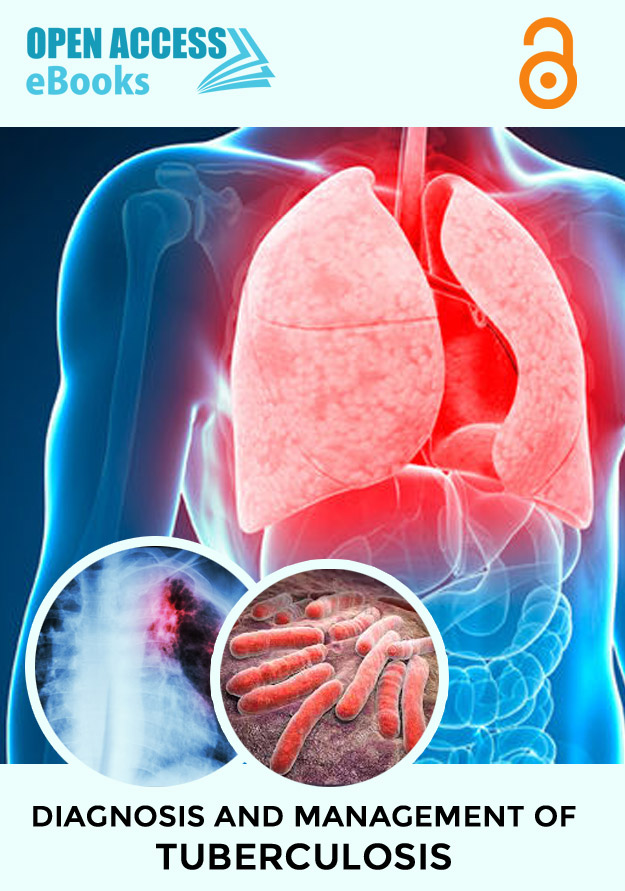List of Chapters
Association of Tuberculosis with HIV & Non Communicable Diseases
Author(s): Salil Bhargava*, Ravi Dosi
Tuberculosis is a contagious disease caused by the organism Mycobacterium Tuberculosis through adroplet mode of spread and a variable period of latency of infection. The organism had been identified in many specimens of almost 6000 years old as well as in various civilizations and amongst several prominent personalities too.
New Insights to Resistance of a Novel Drug Bedaquiline using in-vitro Mutants of ATP Synthase in Mycobacterium Tuberculosis
Author(s): Ameeruddin Nusrath Unissa*; Appisetty Ramya Lakshmi; Swathi Sukumar; Luke Elizabeth Hanna
Bedaquiline (BDQ) is the new first-in-class anti-tuberculosis (TB) compound belonging to the class of diarylquinolone with activity against drug-sensitive and drug-resistant Mycobacterium tuberculosis (M. tuberculosis). This novel drug has the immense potential to shorten TB treatment duration and has been advocated for multi-drug resistant (MDR)-TB treatment. Therefore, BDQ resistance can be considered as a major public health problem and molecular investigation of the same is the utmost need of the hour. The target based concept of resistance to BDQ is caused by mutation in c-ring of adenosine tri phosphate (ATP) synthase, a critical enzyme in the synthesis of ATP in M. tuberculosis coded by atpE gene. BDQ inhibits the proton pump of mycobacterial ATP synthase.
Tuberculosis Treatment and Management
Author(s): Range NS, PhD*
This chapter has four main sections; introduction, TB treatment, management and challenges: The introduction section defines what is tuberculosis (TB) and how it is spread, risk factors, highlights on the historical perspective of TB including; its discovery and treatment (discovery of drugs). The section also explains on the types of TB and burden of TB globally. The treatment section describes the importance of TB treatment, treatment duration and phases, categories of patients, current treatment regimen for adult and for children. The management section gives details on different approaches used in the management of TB patients with main focus on involvement of communities. The section on challenges highlights challenges in TB treatment, management, TB/HIV co-infection, programmatic challenges and in special situations such as MDR-TB and prisons.
Early Diagnosis of Mycobacterium tuberculosis using Next Generation Sequencing
Author(s): Dileep Tiwari*; Divakar Sharma
Tuberculosis is a chronic granulomatous infectious disease caused by tubercle bacteria known as Mycobacterium tuberculosis (Mtb). It is a facultative intracellular organism that is readily phagocytosed but is resistant to intracellular killing by the macrophage. It can remain dormant for years till hosts' immunity persistence and then reactivates itself. Mycobacterium tuberculosis was the first bacterial human pathogen described, which dates back to 1882 by Robert Koch but even today continues to produce devastating illness. Since then, a large number of Mycobacterial species responsible for causing pulmonary and extra-pulmonary infections have been identified in humans as well as in animals [1].
CNS Tuberculosis: An Overview
Author(s): Aadil S Chagla*; Khalil I Mathai; Amey S Parab
Tuberculosis (TB) is foremost amongst ‘the captains of death’of men. It has afflicted humanity from time immemorial. Predictions of its eradication a few decades ago seemed premature and misjudged as the resurgence of TB on the back of the AIDS pandemic derailed benefit paradigms and the emergence of a spectrum of drug resistance brought in new challenges. WHO declared TB a global emergency in April 1995.The historical names for the disease reflect the wasting that is associated with uncontrolled disease. The English called it “consumption” and the Vedas “Yakshma”. The word Tuberculosis is derived from the Latin term ‘Tubercula’ which means small lump.
Diagnosis of Tuberculosis
Author(s): Amer Hayat Khan
Tuberculosis (TB) laboratories play a critical part in national TB programmes, providing clinicians with invaluable information that is used to diagnose and guide the care of patients. Because of the specialized nature of the different technical procedures needed to diagnose TB, and the need for quality assurance and effective laboratory management, TB control programmes require a tiered network of laboratories in which different tiers use complementary diagnostic tools and mechanisms for referring specimens [1].
